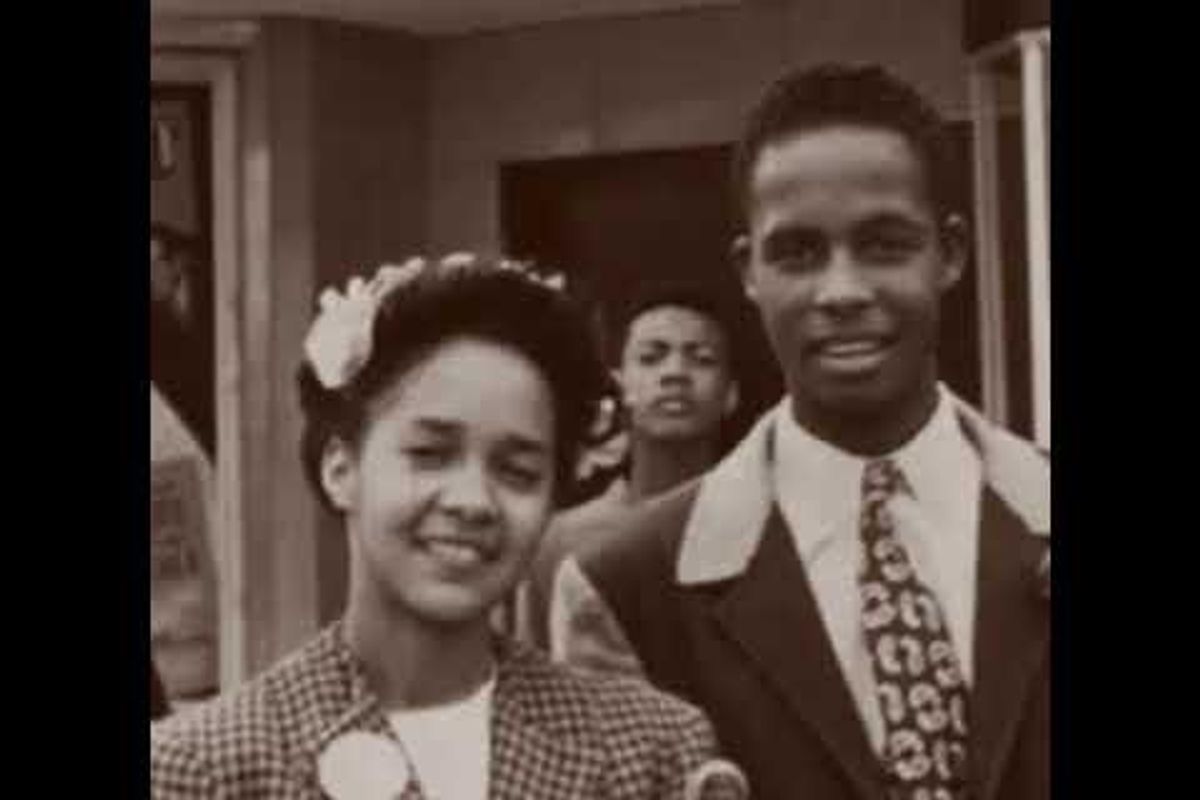There are plenty of things to celebrate about Black Wall Street that you maybe didn't know

How wealthy was Black Wall Street?
When we think of Black Wall Street, we are often struck with the devastating images of the Tulsa Massacre. But Tulsa's colony town of Greenwood forged by visionary business pioneers, has such a richer history.
The following is a very nonexhaustive list of why Black Wall Street should be celebrated, and how it defied the odds.
It all started from 40 acres and a grocery store.
Ottawa “O.W.” Gurley purchased the oil-rich land in 1905, where he built the People’s Grocery store. From there, it became a thriving empire, one that contributed to Tulsa's booming population.
According to Forbes, “between 1910 and 1920, Tulsa’s population nearly quadrupled to more than 72,000 and the Black population rose from below 2,000 to almost 9,000.”
This small plot of land soon advanced to rival even New York City. Can you imagine a small town in Oklahoma matching the Big Apple?!
It wasn’t just in Tulsa.
Besides Greenwood in Oklahoma, there were thriving Black Wall Streets in Illinois, North Carolina, Georgia, Arkansas, Mississippi and Virginia, to name a few.
Just how wealthy were the residents? REALLY wealthy.
We’re talking stylish multi-millionaires driving around in luxury cars kind of wealthy.
To put it in perspective: In the entire state of Oklahoma, there were only two airports, yet six families in Greenwood owned private planes.
If it stood today, Greenwood’s worth is estimated to be somewhere in the billions.
It was completely self-contained.
With its own hospital, school and bank, along with hundreds of businesses, dozens of restaurants, and two movie theatres, the town really wanted for nothing.
The dollar circulated almost a year before leaving the district, which is pretty astounding. To this day, no other community has accomplished that. The longest is somewhere around 45 days.
In fact, many residents earned their money entirely within the city, rather than working in white neighborhoods, helping the city become more affluent.
Greenwood’s Little Rose Beauty Salon helped pave the way for black beauty influencers.
Before there were the multimillion dollar brands like Carol’s Daughter, Shea Moisture and Fenty Beauty, there was the Little Rose Beauty Salon, owned by Greenwood’s Mabel B. Little.
Located right in the heart of Greenwood’s business district, the beloved beauty parlor was filled with customers on Thursdays for “Maid’s Night Out.” Young women who worked in white homes would come to receive the magic of self-care, then strut their stuff down Greenwood Avenue. Washing, setting and waving hair was a particularly strong skill Little possessed, having learned it from her aunt.
It had an elite school.
The Booker T. Washington school prepared its students to succeed in college with a rigorous, well-rounded curriculum.
Freshman year was dedicated to a core program of English, science, art and music, with an emphasis on algebra, Latin and ancient history. In their second year, sophomores studied economics and geometry, followed by chemistry and trade-oriented subjects in junior year. The final year had seniors learning physics and trigonometry, vocal music, art and bookkeeping.
And talk about an appreciation for education: Greenwood teachers were among the town’s highest paid workers.
(Oddly enough, as a native Texan I know there's an arts high school by the same name in Dallas county.)
Black Wall Street produced the country’s first African American female bank owner.

Though she didn't live in Oklahoma, I'm not sure if you can talk about Black Wall Street without mentioning Maggie Walker.
Formerly a teacher, Walker started her career at Richmond, Virginia's Independent Order of Saint Luke, a society that aimed to help freed slaves gain economic independence. Steadily rising through the ranks, she eventually chartered the St. Luke Penny Savings Bank in Richmond, Virginia.
The bank was completely staffed by African American employees, and offered a safe space for residents to manage their money without mistreatment. I mean, when the choice is either to cover up your hair with wax paper to enter a white-owned store or be welcomed as an equal, it’s kind of a no-brainer.
A bronze statue of Maggie Walker currently honors her legacy in downtown Richmond near the city's own Black Wall Street.
There’s a Black Wall street app.
The digital platform, inspired by the prosperity Black Wall Street achieved, aims to provide financial education and empowerment to Black and Latinx users. Using the slogan "Black Cash Matters," the app has adapted the concept of Black Wall Street, and aims to end Black Americans being "systematically refused access to the financial system and the victims of institutionalized predators," according to its website.
When it first launched on June 1, 2021, creator Hill Harper told CNBC that the app’s ultimate goal is to "create a whole ecosystem, and eventually a marketplace where the recirculation, the circulation of dollars through this digital wallet, allows job creation, business creation and job growth.”John W. Rogers, great grandson of Greenwood’s real estate mogul J.B Stradford, eloquently said, “Greenwood shows that when we are left to our own devices and don’t have a knee to our neck, we can achieve extraordinary things.”
Though the tragedy of the Tulsa Massacre is one part of the story, and an important one, this sentiment is equally invaluable. The legacy left behind by Black Wall Street is one of achievement, and its residents proved what can be done when people are indeed able to pursue their happiness.
- Lunar New Year gets funky—watch this amazing Asian dance group ... ›
- Why is Black History Month in February? - Upworthy ›
- She summed up the economic legacy of Black Americans in one ... ›
- How one man roller-skated 685 miles to attend Martin Luther King Jr.'s 'I Have A Dream' speech - Upworthy ›
- Judge rules Tulsa Massacre reparations lawsuit can proceed for the three remaining victims - Upworthy ›

